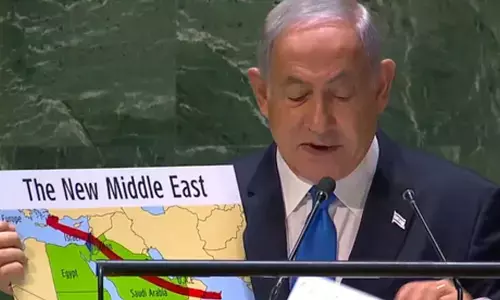Need for more wings in the air

Indigo Airlines has followed Air India in placing the world’s biggest ever airplane order from European aircraft manufacturer Airbus.
Indigo Airlines has followed Air India in placing the world’s biggest ever airplane order from European aircraft manufacturer Airbus. The carrier plans to buy 500 planes, crossing the previous record of 470 planes made by Air India earlier this year. Both airlines are vying to present passengers with efficient aircraft that can fly on a much larger number of routes. They are looking towards rapid expansion of air travel in India over the next decade.
According to Civil Aviation Minister Jyotiraditya Scindia, this will yield tremendous dividends in terms of employment. He estimated that every dollar invested in civil aviation yields 3.1 dollars in terms of new growth as well as being an employment multiplier with 6.1 indirect jobs arising from every job in the sector.
The massive orders by both Indigo and Air India are in line with expectations of the global aviation industry that Asia is set to be the new centre of growth. In fact, the Airbus CEO recently commented that the new centre of gravity for aviation was now shifting to this continent with China and India driving the growth. The existing level of 75 million passengers annually in this country is expected to rise to 125 million over the next decade. It is currently the third largest aviation market in the world. Over the past year, passenger traffic has risen by about 15 per cent and the rate of growth is expected to continue at 13 to 14 per cent over the next decade.
The total fleet size has already shot up from only 400 airplanes in 2014 to 700 currently. These numbers need to be put in perspective as India lags far behind developed markets like the U.S. in terms of the size of its civil aviation fleet.
The total number of commercial aircraft in the U.S. is estimated at over 7000 currently. In fact, the largest carrier in that country, American Airlines has a fleet size of 1500, double that of this country. Thus India has a long way to go to reach the level of developed economies where a large chunk of the population travels regularly by air. In contrast, road and rail are the preferred modes of travel for most Indians in view of the higher cost of air travel.
It was the cost factor that led to the emergence of budget airlines, which now dominate the aviation industry. Though it was Capt. C. R. Gopinath, who launched the first budget airline, Air Deccan, it was left to InterGlobe Aviation to take the concept forward in a big way. Indigo now controls as much as 57 per cent of the market, while Air India- Vistara is a distant second at 18 per cent. Currently, only Air India and its sister airline Vistara are operating full service carriers as all others have been content to remain in the popular budget category.
In this context, one must refer to the stratospheric level to which air fares rose in recent weeks. It became cheaper for a short while to travel abroad rather than within the country. Delhi – Mumbai fares reached a peak of Rs. 19,000 while Kochi-Delhi fare was at Rs.22,000. In contrast, the Delhi-Dubai fare was Rs. 14,000. The spurt in air fares began with the sudden withdrawal of flights by GoFirst, the Wadia-owned airline that has a relatively small eight per cent market share. The reason was defective engines supplied by US-based Pratt and Whitney. Its decision to suspend flights caused great hardship to thousands of passengers, who had booked flights for the next few months. In other words, demand outstripped supply in the short run.
Yet, the crisis reflects the growing demand for air travel that is not met adequately by current players in the industry. It is this need for more flights and destinations that has motivated Indigo and Air India to place the giant aircraft orders with Airbus and Boeing. Other domestic airlines have also placed orders for additional aircraft though not of such magnitude. The total orders for new planes are estimated at 1700 and these are expected to arrive in a phased manner over the next few years.
According to the International Air Transport Association (IATA), the utilisation of Indian airlines’ passenger carrying capacity is higher than most other countries right now. It is even higher than bigger economies like the U.S., China and Japan.
Ratings agency ICRA has also projected that growth in the current fiscal 2023-24 could be as high as 13 per cent. At the same time, the industry continues to have issues related to profitability stemming largely from high fuel costs. Despite issues that could constrain growth, it seems clear that the aviation industry is poised to move into a new era of rapid expansion over the next decade.














